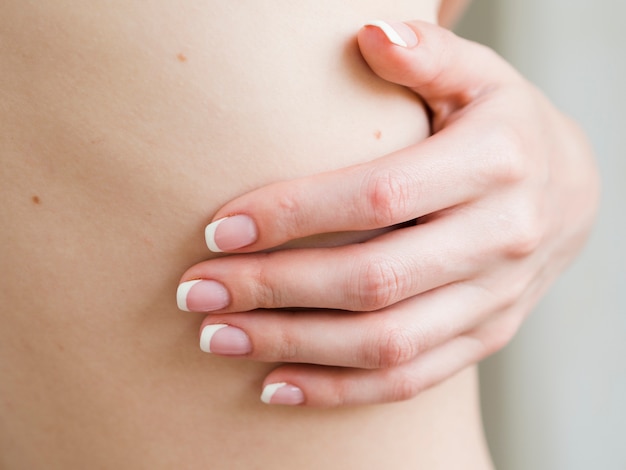Breast self-examinations are a key practice for spotting early signs of breast cancer. By regularly examining their own breasts, individuals can get to know what’s normal for them and notice any unusual changes early on.
The Purpose of Self-Examinations
Doing self-exams regularly helps you become familiar with how your breasts normally look and feel. This way, you can quickly detect any changes, like lumps that might indicate a tumor. It’s important to pay attention to changes in your nipples too, such as if they become inverted, stick out more than usual, or start leaking fluid. Other changes to note include skin differences that affect only one breast. Regular self-checks make it easier to monitor and catch any unusual hardenings in your breast tissue early.
Understanding Breast Cancer
Breast cancer is the most common cancer in women. It happens when some breast cells grow uncontrollably, forming a tumor in the mammary gland. Tumors can be benign (like fibroadenomas or cysts) or malignant (carcinomas). Malignant tumors are concerning because they can spread to other body parts. Early detection through mammograms and regular check-ups based on age and family history improves treatment success. Treatments include surgery, chemotherapy, radiation, hormone therapy, and biological therapies.
When to Perform Self-Examinations
Women should start doing self-exams monthly from the age of 20, ideally one week after their menstrual cycle ends because breast structure changes hormonally each month. Knowing your body helps differentiate normal changes from potential issues. If you’re pregnant or in menopause, the timing is less critical, but consult a doctor if you notice skin changes, nipple discharge, or changes in breast shape.
How to Conduct a Self-Examination
Self-exams involve two parts: observation and palpation.
During observation, look in the mirror for shape irregularities, skin color changes, nipple cracks, ulcers, or dimples. Do this with your shoulders relaxed, arms at your sides, then with arms raised, and finally with hands on your forehead, contracting your pectoral muscles.
For palpation, use three joined fingertips to feel your breasts in small circular motions, covering each quadrant with increasing pressure to detect any lumps or hard areas.
What to Look Out For
During self-exams, check for changes in the shape and size of your breasts, thickening or lumps in your breasts or armpits, nipple discharge, skin dimples or wrinkles, or any unusual sensations. Look out for nipple appearance changes, skin or areola inflammations or rashes, and any unexplained pain in your breast or armpit.
Remember, self-examinations are not a replacement for professional exams and tests like mammograms or ultrasounds. However, they can help detect cancer early, reducing the risk of late-stage diagnosis. If you find any worrisome symptoms, consult a healthcare professional right away.







